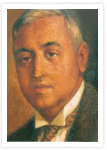Origins and History
 The school’s founder, S. R. Das, was educated at Manchester Grammar School, a highly academic and prestigious all boys’ school founded in 1515 in England. On his return to India, where he served as the Advocate General of Bengal and a member of the Viceroy’s Executive Council of Lord Irwin, he set out to create and establish a school based on the British private boarding school model, but one for Indian boys in India. He wanted them to receive the same educational opportunities he had experienced at Manchester Grammar but without having to leave their home country. S. R. Das aspired to set up a school which was open to all, unlike the majority of the then existing boarding schools that admitted only British pupils and were Christian in ethos, or which served India’s wealthy elites. The Doon School was envisioned as a school that would attract boys from all sections of Indian society, and from every state in India, and would be entirely secular. The Doon School was to specialize in the education of boys who would go on to serve a free and democratic India. The first Headmaster was Arthur Foot, a science master from Eton College. His deputy, John Martyn, who was a Housemaster from Harrow, later became the second Headmaster of the school. Headmaster Arthur Foot believed passionately in the importance of social service and on the first Founder’s Day declared the following in his speech:
The school’s founder, S. R. Das, was educated at Manchester Grammar School, a highly academic and prestigious all boys’ school founded in 1515 in England. On his return to India, where he served as the Advocate General of Bengal and a member of the Viceroy’s Executive Council of Lord Irwin, he set out to create and establish a school based on the British private boarding school model, but one for Indian boys in India. He wanted them to receive the same educational opportunities he had experienced at Manchester Grammar but without having to leave their home country. S. R. Das aspired to set up a school which was open to all, unlike the majority of the then existing boarding schools that admitted only British pupils and were Christian in ethos, or which served India’s wealthy elites. The Doon School was envisioned as a school that would attract boys from all sections of Indian society, and from every state in India, and would be entirely secular. The Doon School was to specialize in the education of boys who would go on to serve a free and democratic India. The first Headmaster was Arthur Foot, a science master from Eton College. His deputy, John Martyn, who was a Housemaster from Harrow, later became the second Headmaster of the school. Headmaster Arthur Foot believed passionately in the importance of social service and on the first Founder’s Day declared the following in his speech:
“The boys should leave Doon School as members of an aristocracy, but it must be an aristocracy of service inspired by ideas of unselfishness, not one of privilege, wealth or position.”
The school opened in 1935 as an all-boarding institution, and is now home to approximately 500 boys aged 12–18 years. The school is situated in the foothills of the Himalayas, north of Delhi. It is set in seventy acres on the site of the original Forestry Research Institute of India, with several species of flora and fauna on the estate; there is a diverse variety of trees on the campus.
The BBC World Service: India’s Eton in conversation with Old Boy and journalist George Verghese. Click Here

 ANNOUNCEMENT
ANNOUNCEMENT
